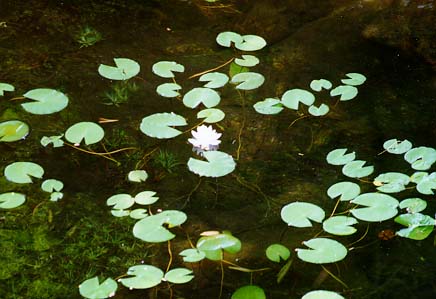 Your descriptions and species numbers will be used to create a more complete picture of the biodiversity of your body of water.
Your descriptions and species numbers will be used to create a more complete picture of the biodiversity of your body of water.
Record a description and number and, if possible, identify the plants. Ideally, take time to draw a sketch. Also note the number of these organisms that you see.
For this field trip, you will not be able to collect many of the organisms that you see. However, it is important to record these observations in your Journal.
Class Cartographers: Your job is to record on a map of the study site exactly where each sample is taken. Remember to keep track of which group is taking the samples from a given location, and the type of sample that is being taken.
Note: It is important to contact a local naturalist or wildlife organization to learn of any endangered and/or protected plants growing in or around your body of water. If there are, these plants should not be disturbed!